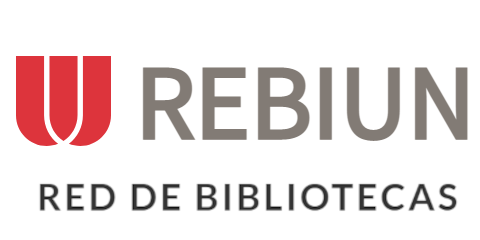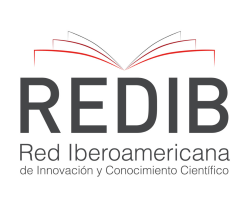Enhancing EFL young learners’ vocabulary through online Extensive Reading (ER) and visual strategies: An action research study
Resumen
A vast body of literature highlights the benefits of Extensive Reading (ER) in second language acquisition (SLA). ER is a pedagogical strategy that involves reading a large number of level-appropriated and engaging texts. Its benefits have been widely documented for its effectiveness in fostering language development, principally vocabulary acquisition. This study aimed to investigate the impact of ER facilitated through a virtual library, created on Edmodo, and supplemented with visual strategies on young English as a Foreign Language (EFL) learners’ vocabulary growth. The research was conducted with 21 seventh-graders from a public primary school. A mixed-method research design was followed to systematically measure the effects of ER on young students’ vocabulary acquisition. Data collection involved administering a pretest to set a baseline of participants' vocabulary previous knowledge. At the end of the experimental phase, a posttest to assess learners’ vocabulary growth was administered. Findings revealed a considerable positive impact, with a Cohen’s d effect size of 3.35, indicating a significant improvement in participants’ vocabulary development. Results highlight the efficacy of ER as a strategy for enhancing young learners’ lexicon. Combining ER methodology with digital libraries and incorporating visual aids can address diverse learning styles and maximize language engagement. These findings contribute to the growing body of evidence that supports the integration of ER, technology, and visual aids into EFL teaching practices, particularly in contexts where access to physical texts might be limited. In conclusion, ER appears to be a highly effective strategy for promoting vocabulary acquisition among young EFL learners.
Descargas
Citas
Agustín, M., & Barreras, M. (2007). Children's characteristics in vocabulary acquisition and use in the written production. RESLA 20, 9-26. https://dialnet.unirioja.es/servlet/articulo?codigo=2514258
Aji, A. (2018). Edmodo in English Learning. 2nd English Language and Literature International Conference, 2, 304-308. https://jurnal.unimus.ac.id/index.php/ELLIC/article/download/3481/3372
Al Damen, T. (2018). The effectiveness of m-reader in promoting extensive reading among Arab EFL learners. Arab World English Journal (AWEJ), 3-23. https://dx.doi.org/10.24093/awej/MEC1.1
Al-Kathiri, F. (2015). Beyond the classroom walls: Edmodo in Saudi Secondary School EFL instruction, attitudes, and challenges. English Language Teaching, 8(1), 189-204. https://doi.org/10.5539/elt.v8n1p189
Bojovic, M. (2014). Reading skills and reading comprehension in English for specific purposes. In U. o. Faculty of Logistics (Ed.), The International Language Conference on The Importance of Learning Professional Foreign Languages for Communication between Cultures (pp. 1-5).
Cambridge University. (2018). Extensive reading for Primary ELT [PDF file]. Cambridge University Press. http://cambridge.org/betterlearning
Celik, B., & Altun, M. (2023). The Relationship between Reading Skills and Language Proficiency. International Journal of Social Sciences & Educational Studies, 10(1), 303-307. https://eprints.tiu.edu.iq/1402/1/Reading.pdf
Cheetam, D. (2015). Extensive reading of children’s literature in first, second, and foreign language vocabulary acquisition. CLELE journal, 3(2), 1-23. http://clelejournal.org/extensive-reading-of-childrens-literature-and-vocabulary-acquisition-cheetham/
Chung, D. T. (2023). The Efficacy of Visual Aids in Enhancing Vocabulary Acquisition in EFL Classes. International Journal of Social Science and Human Research, 6(10), 6397-6403. doi: 10.47191/ijsshr/v6-i10-80
Cote, T., & Milliner, B. (2015). Implementing and managing online extensive reading: Student performance and perceptions. IALLT Journal of Language Learning Technologies, 45(1), 70-90.
Dao, T. (2014). Using internet resources for extensive reading in an EFL context. Hawaii Pacific University TESOL Working Paper Series, 12, 72-95.
Day, R. (2011). The benefits of extensive reading (ER). ELT Journal, 65 (1), 99-101 http://www.oupe.es/
Day, R. (2015). Extending extensive reading. Reading in a Foreign Language, 27(2), 294-301. http://nflrc.hawaii.edu/rfl/October2015/discussions/day.pdf
Day, R. & Bamford, J. (2004). Extensive reading activities for teaching language. Cambridge University Press
Dickinson, P. (2017). Effects of extensive reading on EFL learner reading attitudes. Faculty of Foreign Studies, Meijo University, 28-35.
Education First. (2024). English Proficiency Index. https://www.ef.com/wwen/epi/
Extensive Reading Foundation. (2011). Guide to extensive reading [PDF file]. http://erfoundation.org/wordpress/
Graham, K. (2016). Extending the language classroom with Edmodo. Modern English Teacher, 25(2), 41-43. https://www.modernenglishteacher.com/media/2592/graham.pdf
Grave, M. (2016). The Vocabulary Book: Learning & Instruction. Teachers College Press.
Griva, E., Kamaroudis, S., & Geladari, A. (2009). Young learners’ vocabulary strategies employment in a foreign language. Synergies, 2, 21-36. https://gerflint.fr/Base/SE_europeen2/griva.pdf
Huang, H. (2013). E-reading and e-discussion: EFL learners’ perceptions of an e-book reading program. Computer Assisted Language Learning, 26(3), 258-281. https://www.researchgate.net/publication/254217029_E-reading_and_e-discussion_EFL_learners'_perceptions_of_an_e-book_reading_program
Jiang, X. (2014). Vocabulary learning through use of the picture-word inductive model for young English learners in China: a mixed methods examination using cognitive load theory. FIU Electronic Theses and Dissertations. https://doi.org/10.25148/etd.FI14071150
Kongchan, C. (2013). How Edmodo and Google Docs can change traditional classrooms. The European Conference on Language Learning 2013 Official. King Mongkut's University of Technology. https://docplayer.net/10565983-How-edmodo-and-google-docs-can-change-traditional-classrooms-chada-kongchan-king-mongkut-s-university-of-technology-thonburi-thailand.html
Krashen, S. (1982). Principles and practice in second language acquisition. Pergamon Press Inc
Krashen, S. (1993). The power of reading: Insights from the research. Libraries Unlimited.
Krashen, S. (2013). Second Language Acquisition: Theory, application, and some conjectures. Cambridge University Press.
Larsen-Freeman, D., & Long, M. (1991). An introduction to Second Language Acquisition research. Longman
Lawrence, S. (2016). Extensive reading in English as a foreign language/ English as a second language context. Kyoto Bunkyo University , 9, 69-85. https://www.kbu.ac.jp/kbu/library/d-kiyo/kiyopdf/ringaku09-7.pdf
Lee, H.-N., & Mallinder, M. (2017). Role of extensive reading in EFL vocabulary development: review and recommendation. The English Teacher, 15, 145-163. https://journals.melta.org.my/index.php/tet/article/view/268/165
Lessard-Clouston, M. (2013). Teaching Vocabulary. TESOL International Association.
Lozano, D., & Troya, M. (2023). Storytelling and reading skills among tenth graders at an Ecuadorian public school. Ciencia Latina Revista Científica Multidisciplinar, 2191-2207.
McBride, P., & Milliner, B. (2014). Managing extensive reading: Introduction to M-reader. The Journal of Saitama City Educators, 4(5), 20-30. https://www.academia.edu/8172684/Introduction_to_M-reader_An_online_extensive_reading_aid_for_schools
Mashhadi, F., & Jamalifar, G. (2015). Second language vocabulary learning through visual and textual representations. Procedia - Social and Behavioral Sciences, 298-307. https://doi.org/10.1016/j.sbspro.2015.06.043
Mediha, N, & Enisa, M. (2014). A comparative study on the effectiveness of using traditional and contextualized methods for enhancing learners’ vocabulary knowledge in an EFL classroom. Procedia – Social and Behavioral Sciences, (116), 3443-3448. https://doi.org/10.1016/j.sbspro.2014.01.780
Mesureur, G. (2013). An evaluation of ESL reading efficiency and motivation using e-book vs. printed book. In S. Miles & M. Brierley (Eds.), Proceedings of the Second World Congress on Extensive Reading, 311-320. Seoul, Korea. http://erfoundation.org/ERWC2-Proceedings.pdf
Mills, G. E. (2003). Action research: A guide for the teacher researcher. Merrill/Prentice Hall.
Milliner, B., & Travis, C. (2015). Mobile-based extensive reading. International Journal of Computer-Assisted Language Learning and Teaching, 5(4), 1-15. https://www.researchgate.net/publication/283005959
Min, H. (2008). EFL vocabulary acquisition and retention: reading plus vocabulary enhancement activities and narrow reading. Language Learning, 58(1), 73-115. http://dx.doi.org/10.1111/j.1467-9922.2007.00435.x
Ministerio de Educación. (2016). English as a foreign language curriculum [PDF file]. Quito, Ecuador: Ministerio de Educación.
Nagy, W., & Herman, P. (1987). Breadth and depth of vocabulary knowledge: Implications for acquisition and instruction. In, M. Mckeown and M. Curtis (Eds.), The Nature of Vocabulary Acquisition (pp. 19-35). Erlbaum.
Nuttal, C. (1996). Teaching Reading Skills in a Foreign Language. London: Heinemann Educational Books.
Pellicer-Sánchez, A. (2016). Incidental l2 vocabulary from and while reading. Studies in Second Language Acquisition, 38, 97-130. https://doi.org/10.1017/S0272263115000224
Renandya, W. (2009). The power of extensive reading. RELC Journal , 133, 133-149. https://doi.org/10.1177/0033688207079578
Renandya, W. & Jacobs, G. (2002). Extensive reading: Why aren’t we all doing it? In J. Richards & W. Renandya (Eds.), Methodology in Language Teaching (pp. 295-302). Cambridge University Press
Restrepo, F. (2015). Incidental vocabulary learning in second language acquisition: A literature review. PROFILE , 17(1), 157-166. http://www.scielo.org.co/pdf/prf/v17n1/v17n1a10.pdf
Richards, J., & Renandya, W. (2002). Methodology in language teaching. Cambridge University Press.
Seyabi, F., & Salwa, A. (2016). A closer look at extensive reading in Omani Public Schools: Current practices and teachers’ perceptions. English Language Teaching, 9(8), 93-105. https://doi.org/10.5539/elt.v9n8p93
Sun, S., Shieh, C., & Huang, K.. (2013). A research on comprehension differences between print and screen reading. SAJEMS, 87-101. https://www.researchgate.net/publication/298453520_A_Research_on_comprehension_differences_between_print_and_screen_reading
Swain, M. (1999). Integrating language and content teaching through collaborative tasks. In C. Ward & W. Renandya (Eds.), Language teaching: New insights for the language teacher (pp. 125–147). SEAMEO Regional Language Centre.
Torres, A., & Conza, H. (2023). Ecuador, The Impact of Communicative Language Teaching Activities on English Vocabulary on Secondary Students in. Ciencia Latina Revista Científica Multidisciplinar, 4832-4847.
Walter, C., & Briggs, J. (2016). Read On! Extensive reading and young second language learners' motivation and attitudes. Oxford University Press. https://www.researchgate.net/publication/301453032
Derechos de autor 2025 Lisseth Priscila Cabanilla García, Lester Fennell Pereddo Hidalgo, Tatiana Gabriela Pineda Guzmán

Esta obra está bajo licencia internacional Creative Commons Reconocimiento 4.0.













.png)




















.png)
1.png)


